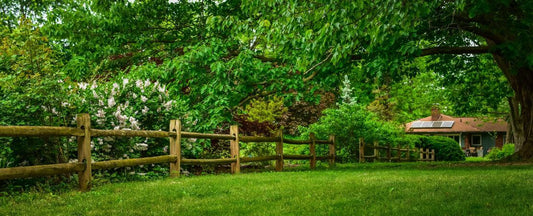Secrets to a Chemical-Free Garden

Natural Methods for Pest Control in the Garden
When holes or spots start appearing on plant leaves, a lot of gardeners’ knee-jerk reaction is to reach for a chemical spray and set out to eradicate the pests. But this “solution” doesn’t really address the systemic issues that led to infestation in the first place.
Natural methods of pest control are not only better for the environment, but they are more viable in the long run. An unhealthy garden will continue to be plagued by problems and require more and more chemical help, while a well-designed and healthy chemical free garden will keep pests and diseases at bay the natural way, with little need for help from you. You can easily have a pest and chemical free garden by following these few tips.
You Can Create a Healthy and Chemical-free Garden by Following These Easy Tips:
- Choose native plants and give them the conditions that they are already adapted for. When plants are happy in their spot, their natural pest and disease resistance will be high.
- Create very diverse plantings. Having a mixture of different plants in an area helps to confuse pests and throw them off of the trail.
- Develop a healthy soil rich in organic material. The “good” micro-organisms in the soil are vital to controlling the “bad” micro-organisms in the soil.
- Use plants to trap pests. Geranium (pelargonium) is a popular trap plant that has been reported to trap leafhoppers and Japanese beetles. Keeping your vulnerable plants like roses and grapes safe.
- Use plants along borders to repel pests. It has been reported that dill repels aphids, spider mites, and squash bugs. Sage deters cabbage flies, carrot flies, black flea beetle, and cabbage looper. Lavender repels mosquitoes and gnats.
- Use plants as a natural insecticide. Delphinium is said to poison Japanese beetles that eat it. While the natural pyrethin in chrysanthemum cinerariaefolium or painted daisies can be used to kill a broad spectrum of pests (but this natural toxin should be more of a last resort, as it can also harm humans, pets, and honeybees).
- Use plants as habitat for beneficial predatory insects. If you provide the praying mantises, hoverflies, lacewings, and ladybugs the conditions they like, they will reward you by sticking around more to snack on your pests.
Products with neem oil are especially handy and versatile, as they smother both eggs and adult insects of most pest species AND they naturally protect foliage from fungus. Apply Neem Oil as protection before pests and fungus get established. It will be much easier than fighting them once they have a foothold. If you are already seeing signs of fungus, you can fight it with a spray of Baking Soda, soap, and water. Baking soda is great for treating powdery mildew, while water and milk (yes, milk) is oddly effective against blackspot.
To protect your trees from being scaled by pests, add 1 diced garlic bulb, 1 diced onion, 1 tablespoon of Cayenne pepper, and 2 tablespoons of biodegradable soap to a quart of water, strain the mixture, then add the liquid to wood ashes and make a paste. Apply this in a ring around your trees’ trunks. The pest-repellent liquid in this recipe also works squirted on plants. Cyrus oil is another good ingredient to add to the mix for repelling pests like ants.
To kill on the spot any insects that you see, simply squirt them with soapy water. The soap will strip the oil from their exoskeleton, drying them out and killing them. Good biodegradable options are Murphy’s Oil Soap or Castile Soap. Use this option sparingly, however, because the soap can also kill beneficial insects. A line of Diatomaceous Earth will deter climbing insects, slugs, and snails. The jagged granules make tiny tears in their skin that can ultimately kill them.
There are a wealth of pest-fighting recipes online, but some are more effective than others. And if you grow a naturally pest-resistant garden to begin with, you should rarely need the recipes.



